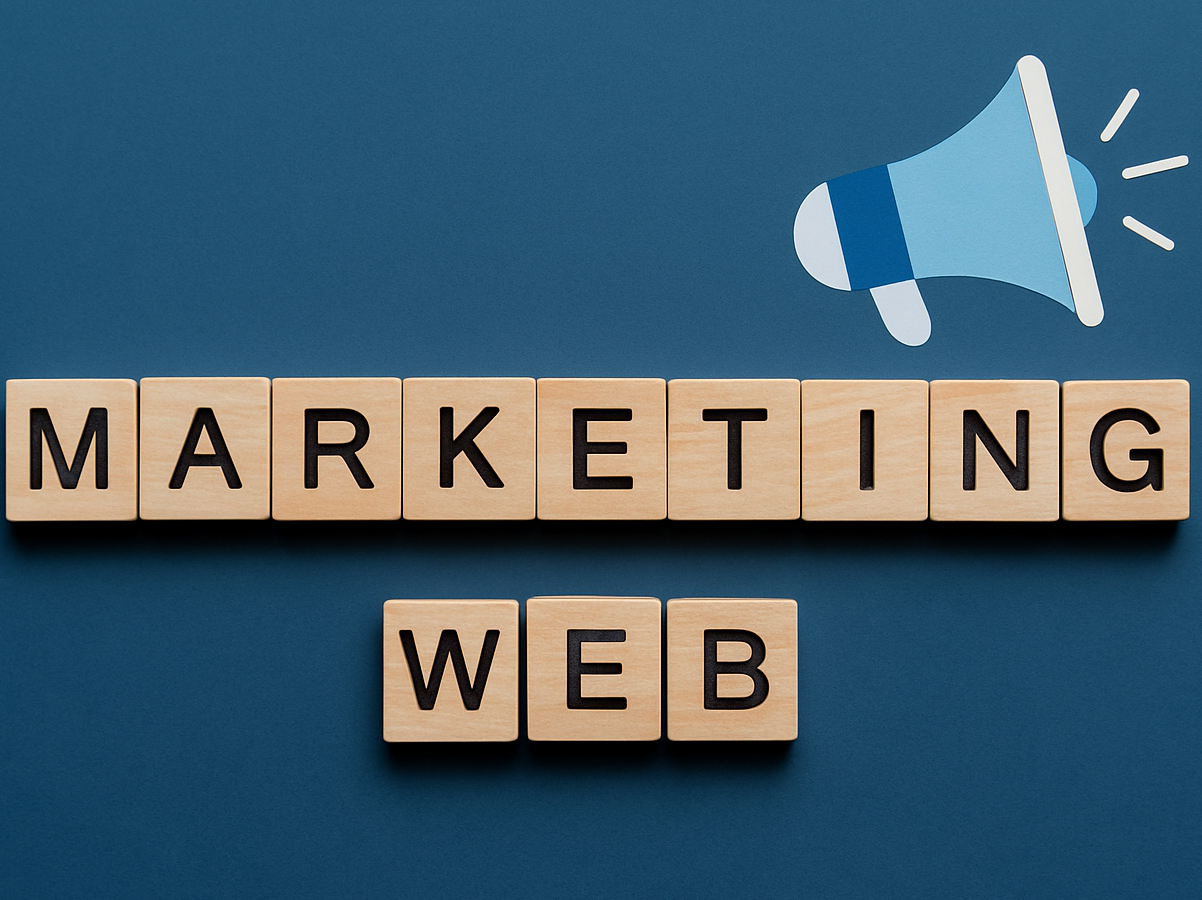Marketing strategy plays a central role in the success of businesses.
In this article, we will explore the definition and importance of a marketing strategy, its essential components, and the steps to implement it.
We will also cover digital tools, mistakes to avoid, and emerging trends in this field.
You will learn how to optimize your marketing efforts and stand out in a competitive environment. This guide will provide practical advice to create and adjust your marketing strategy based on market changes.
1. Understanding marketing strategy
Marketing strategy represents the set of planned actions aimed at achieving specific business goals. On one hand, it relies on an in-depth market analysis. On the other hand, it requires a thorough understanding of customer needs. Moreover, it helps define brand positioning and optimize communication. Thus, marketing strategy serves as an essential lever for business growth.
1.1 Definition and challenges
Marketing strategy is defined as the structured approach to developing coherent action plans. It helps identify opportunities and differentiate from competitors. Additionally, it guides the choice of communication channels and messages. Furthermore, it is used to measure performance and adjust campaigns in real-time.
1.2 The importance for the business
A company with a strong marketing strategy becomes more efficient. First, it optimizes the allocation of its resources. Then, it strengthens its brand image. Moreover, it positions itself advantageously against competitors. Finally, it provides a clear and shared vision of its objectives to the entire team.
2. Why develop a marketing strategy?
It is essential to develop a marketing strategy to plan your actions and structure your campaigns. Additionally, it offers a global vision that helps you anticipate and adapt to market changes. Several key objectives justify this approach.
2.1 Visibility and SEO
A marketing strategy increases the visibility of your products. Furthermore, SEO optimization strengthens your presence on search engines. Additionally, quality content attracts attention and engages the audience. Thus, your brand awareness grows sustainably.
2.2 Resource optimization
Planning your actions helps manage budgets effectively. Each initiative is planned and evaluated. Moreover, resource allocation adapts to current needs. Therefore, you maximize your return on investment.
2.3 Performance measurement
A well-thought-out marketing strategy provides precise performance indicators. KPIs help assess the effectiveness of actions. Moreover, they facilitate quick decision-making, adapted to market changes.
2.4 Convincing the customer
Each action aims to build trust with the customer. Clear and coherent messages enhance audience engagement. Thus, the customer feels valued and is encouraged to make a purchase.
2.5 Differentiating from competitors
A solid marketing strategy helps define a unique positioning. It highlights your competitive advantages. Additionally, you anticipate competitors’ actions. Consequently, you position yourself advantageously in the market.
2.6 Improving the company’s image
Regularly publishing quality content enhances your company’s image. Moreover, effective communication strengthens your brand. Furthermore, a positive image fosters customer loyalty and attracts new prospects.
2.7 Developing new businesses in new markets
Market analysis and segmentation identify new opportunities. Then, you adapt your offers to reach a new audience. As a result, you open doors to new markets and diversify your activities.
2.8 Economies of scale
Strategic planning groups your marketing actions coherently. Moreover, it allows you to rationalize your investments. As a result, you achieve economies of scale and increase the overall efficiency of your campaigns.
3. What are the different types of marketing strategies?
There are several approaches to guide your marketing actions. Each strategy targets a specific goal and offers particular advantages. Moreover, each has disadvantages to consider. Let’s look in detail at the four essential strategies :
- Concentration
- Differentiation
- Skimming
- Penetration
3.1 Concentration strategy
The concentration strategy involves focusing all your marketing efforts on a specific market segment. In practice, you choose a niche or a very specific consumer segment. Your product or service is then perfectly suited to a precise customer base.
Example of use :
Let’s take a bio cosmetics brand that specializes only in skincare for sensitive skin. It offers a very targeted range of creams, lotions, and serums specifically designed for this segment. Additionally, it communicates with a clear message, directly tailored to this audience.
This strategy has several advantages. First, you develop deep expertise in your niche, which reassures consumers. Next, your communication becomes precise, direct, and impactful. As a result, it increases customer trust and loyalty. Finally, by concentrating your resources, you achieve economies and maximize your profitability.
However, there are also some disadvantages. Indeed, the targeted market is usually limited, which may restrict your long-term growth. Additionally, you are vulnerable to fluctuations in demand in this particular market.
3.2 Differentiation strategy
The differentiation strategy aims to make your offer unique in the eyes of consumers. In other words, it allows your product or service to stand out clearly from competitors. This differentiation can be achieved through quality, innovation, customer service, or brand image.
There are two main approaches in differentiation strategy :
Differentiation by the top :
Here, you aim for excellence and position your product as superior to your competitors. For example, Apple uses this strategy by offering high-end smartphones with strong added value in terms of design and technology. The communication focuses on the premium and exclusive aspect.
Differentiation by the bottom :
In this case, you highlight unique features while offering more affordable prices. For example, IKEA differentiates itself by offering innovative-designed furniture at attractive prices.
The advantages of this strategy include strengthening your brand identity. Additionally, it justifies a pricing policy that is often more advantageous for your business. Finally, it facilitates customer loyalty, as people are attracted to your unique nature.
However, there are also disadvantages. Indeed, research and development or design costs are often high. Moreover, the competitive advantage can be hard to maintain over time, as competitors can quickly imitate you. Lastly, the significant investment in innovation can increase your expenses considerably.
3.3 Skimming strategy
The skimming strategy (or "price skimming") involves setting a high price when launching a product to target a customer base willing to pay more for exclusivity or innovation. The main goal is to maximize profits initially, before gradually lowering the price as the product matures.
For example, when a high-end TV manufacturer launches an innovative screen model (OLED, QLED), it initially offers a high price. The goal is to attract customers willing to pay a premium to be among the first users.
The main advantages of this strategy include achieving high margins immediately after the product’s release. Additionally, it significantly enhances the brand image by creating a sense of luxury and exclusivity. This attracts a premium customer base, further strengthening the positive perception of your products.
However, there are disadvantages. The high price naturally limits short-term sales volume. Additionally, this quickly prompts competitors to offer similar products at lower prices. Finally, this strategy requires a truly innovative and attractive product, or the customer base may not respond positively to the price.
3.4 Penetration strategy
In contrast to skimming, the penetration strategy involves setting a very attractive price from the launch to quickly gain market share. The goal here is to attract as many customers as possible in the shortest time. The company focuses on quantity rather than margin per product.
For example, a new streaming platform might offer a very low price or a free trial period to attract massive users from the start. Thus, it quickly gains a large market share.
This strategy offers many advantages. First, it allows you to quickly conquer the market against competitors. Additionally, it generates rapid sales growth, leading to significant economies of scale. Moreover, it quickly boosts your brand visibility and strengthens your competitive position in the short term.
However, there are also disadvantages. First, initial margins are often very low, or even negative at first. Additionally, this approach can spark a price war with competitors, potentially diminishing long-term profitability. Finally, it is crucial to manage your costs well to avoid significant losses initially.
4. The pillars of a successful marketing strategy
A successful marketing strategy relies on several fundamental pillars. These elements must be rigorously analyzed and integrated to create a coherent and effective action plan.
4.1 Market analysis and segmentation
First, market analysis is essential. It allows you to identify trends and understand the competition. Then, segmentation divides the market into homogeneous groups. Each segment receives a tailored message. This approach makes the marketing strategy more relevant.
4.2 Brand positioning
It is essential to define distinctive positioning to stand out. Indeed, positioning reflects the uniqueness of your value proposition. Additionally, it guides the tone and style of communication. Furthermore, good positioning enhances credibility with consumers.
4.3 Marketing mix
The marketing mix, or the 4Ps (Product, Price, Place, Promotion), is an essential foundation. First, the product must meet customer expectations. Then, the price must be competitive. Additionally, distribution (place) must be optimized to reach the target audience. Finally, promotion must highlight the offer and reinforce the brand image.
4.4 Setting clear objectives
A successful marketing strategy requires clear objectives. These should be SMART (specific, measurable, achievable, realistic, and time-bound). Then, these objectives help with implementing and monitoring actions. As a result, they provide a structured framework to measure progress and adjust plans.
5. How to develop your marketing strategy?
The development of a marketing strategy occurs in several key stages. These stages help organize actions and ensure overall coherence.
5.1 Strategic diagnosis
Start by conducting an internal and external diagnosis. For this, the SWOT analysis (Strengths, Weaknesses, Opportunities, Threats) is very useful. Additionally, this analysis provides a realistic view of the company’s environment. Thus, it helps identify areas for development.
5.2 Setting objectives
Next, it is crucial to set clear and measurable objectives. For example, increasing website traffic by 25% in less than a year. Moreover, these objectives must be shared with all teams. This way, everyone contributes to the success of the marketing strategy.
5.3 Creating the action plan
Then, write a detailed action plan. Each step must be planned over time and assigned to specific responsible parties. Moreover, it is important to identify the necessary tools and resources. Additionally, the action plan should be flexible to allow adjustments along the way.
5.4 Ongoing monitoring and evaluation
After implementation, regular monitoring of actions is essential. Indeed, it helps measure results and identify areas for improvement. Additionally, analyzing performance indicators helps adjust campaigns. Furthermore, it is important to organize debrief meetings to stay aligned with objectives.

6. Common mistakes to avoid
It is easy to make mistakes when developing a marketing strategy. However, some mistakes can jeopardize results and hinder business growth.
6.1 Lack of prior analysis
First, neglecting market analysis can lead to risky decisions. Indeed, without a thorough understanding of the market, actions may not reach the target audience. Therefore, it is essential to gather reliable data.
6.2 Unclear positioning
Next, vague positioning harms brand credibility. Additionally, it makes differentiation from competitors difficult. Furthermore, a confusing message can bewilder customers. Thus, it is crucial to define your value proposition clearly.
6.3 Insufficient monitoring
Finally, insufficient or poorly structured monitoring can hide dysfunctions. As a result, the lack of measurement and control tools compromises responsiveness. Moreover, it becomes hard to quickly correct deviations from the initial objectives.
7. Current trends and the future of marketing strategy
The field of marketing strategy is constantly evolving. Additionally, technological innovations are transforming practices and offering new opportunities.
7.1 The impact of digital and social media
First, digital is revolutionizing the way marketing strategies are designed. Indeed, social media provides a direct channel to engage the audience. Additionally, they allow the distribution of interactive and personalized content. Thus, the company’s visibility is strengthened, and ROI is optimized.
7.2 Artificial intelligence and data analysis
Next, artificial intelligence is transforming data collection and analysis. Moreover, it allows the personalization of the customer experience in real-time. Additionally, it facilitates segmentation and optimization of campaigns. As a result, the marketing strategy becomes more agile and responsive.
7.3 Content marketing and SEO
Furthermore, content marketing has become indispensable. On one hand, it adds value to visitors. On the other hand, it improves positioning on search engines through optimized SEO. As a result, businesses investing in content marketing stand out and retain their audience.
7.4 Evolving consumer behaviors
Finally, consumers are constantly changing their habits. Indeed, they prioritize speed, authenticity, and transparency. Moreover, they expect personalized interactions and immediate responses. Thus, it is essential to adapt the marketing strategy to these new expectations to stay competitive.
Summary and future perspectives
In summary, developing a clear marketing strategy is essential to ensure the sustainable growth of your business. This involves in-depth analysis, clear positioning, and regular monitoring of your actions. In the future, marketing strategies will need to constantly adapt to technological developments and changing consumer expectations.
At The Webix, we know that a successful marketing strategy is at the heart of digital success. Whether through SEO, online advertising or optimizing your presence on social media, we help you reach your goals and strengthen your web presence.
Invest now in a solid, proactive, and innovative marketing strategy to position your business as a leader in your market.








